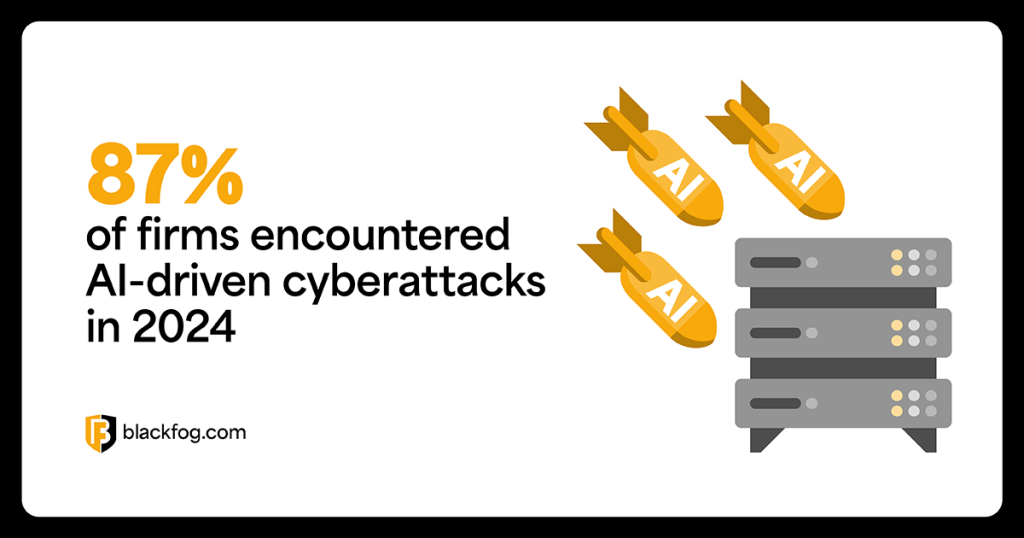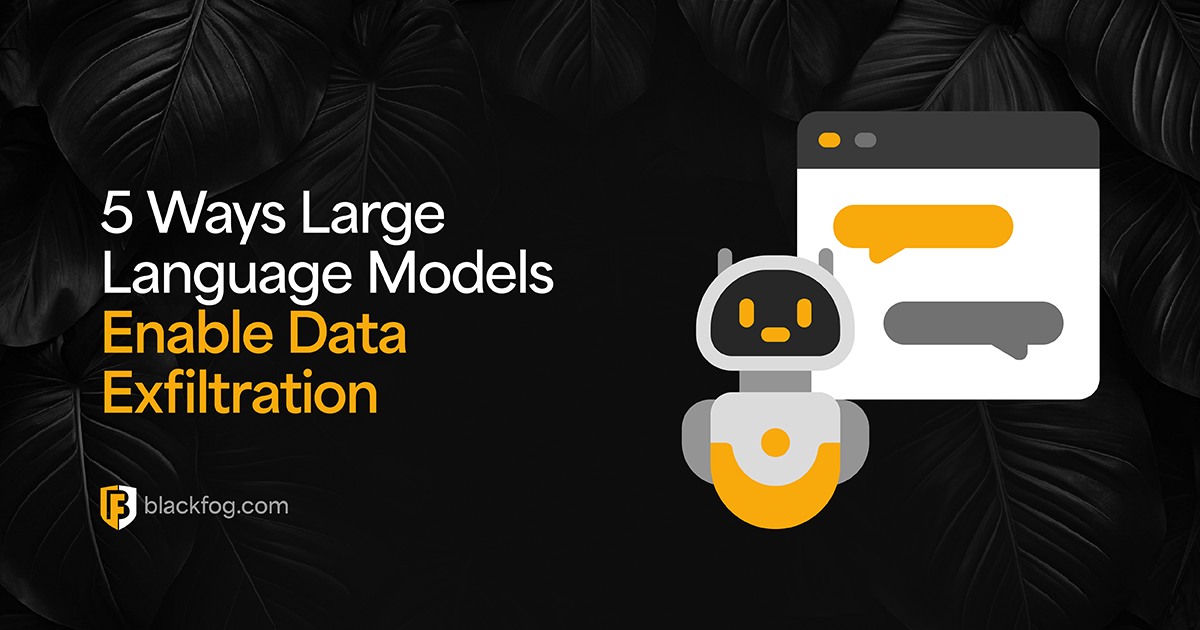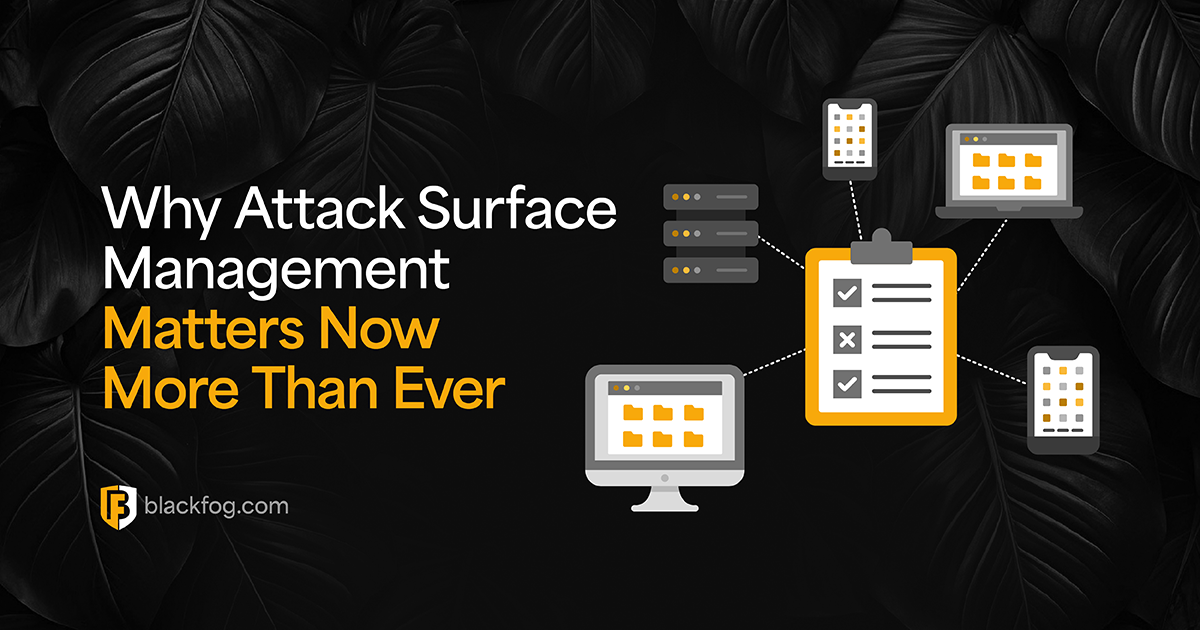
How Has Generative AI Affected Security?
Generative AI is no longer just a futuristic concept – it’s a present-day reality that’s reshaping the cybersecurity landscape. These tools have become invaluable to businesses due to their ability to rapidly create text, imagery and even video. However, it also brings with it new threats.
Cybercriminals are leveraging generative AI in a variety of ways to attack businesses, bypass defenses and exfiltrate data. A recent report for SoSafe revealed that 87 percent of organizations encountered AI-driven cyberattacks in 2024, highlighting the escalating threat posed by these technologies.
As generative AI continues to evolve, cybersecurity professionals will find it increasingly challenging to counter these advanced threats. Therefore, understanding how these tools are used and what signs to look out for is crucial for developing effective defense strategies for the new era of cyberattacks.

What is Generative AI – and why Does it Matter for Cybersecurity?
Generative AI refers to a category of artificial intelligence models designed to produce original content based on patterns learned from vast datasets. This can include code, text, images, audio or video. Popular examples include text-based large language models (LLMs) like OpenAI’s GPT-4 and Google’s Gemini, image generators like Midjourney and DALL-E and video tools such as Runway or Synthesia.
What sets generative AI apart from other forms of artificial intelligence is its creative output and general-purpose usability. Conventional AI often focuses on data classification or predictive analytics, making it useful in areas such as spam filters or fraud detection. Generative models, however, can autonomously craft phishing emails, fabricate identities, or write malware code in a matter of seconds.
This has serious implications for cybersecurity. Generative AI is fast, scalable and easy to access, enabling less-skilled actors to execute more convincing and targeted attacks. More sophisticated users, meanwhile, can use it to craft highly targeted attacks or take advantage of vulnerabilities.
The Security Risks Introduced by Generative AI
Generative AI’s ability to automate and scale complex tasks makes it a powerful tool for threat actors. Its capabilities are wide-ranging, allowing hackers to develop a number of AI-powered cyberattacks, whether to target individuals or break into systems directly. Key malicious applications for this technology include the following.
- Phishing at scale: Attackers can use LLMs to instantly craft convincing, well-written phishing emails. These messages often mimic corporate language or replicate internal communication styles, making them harder for users to detect.
- Malware creation: Code-generation tools allow attackers to create or customize malware without deep technical knowledge. Some tools can even write obfuscated or polymorphic code that is harder for traditional antivirus software to detect.
- Social engineering: Generative AI can create persuasive scripts for scam calls, fake job offers, or credential harvesting attacks. Highly personalized manipulation techniques are more likely to succeed in getting employees to hand over login credentials, for example.
- Deepfake video and synthetic voice attacks: Threat actors can generate fake videos or mimic voices of executives. This may be used to trick users into sharing sensitive data or run misinformation campaigns that can damage trust and brand reputation.
- Prompt injection and data leakage: Unsecured AI tools embedded in workflows can be manipulated by sending malicious prompts to the system. This can result in AI assistants leaking internal business information.
What Generative AI Means for Cyber Defenses
Generative AI will require defenders to rethink traditional tools and workflows. Many existing systems, especially legacy detection tools and rule-based filters, are not designed to cope with the scale or sophistication of these threats, leaving them exposed to AI security vulnerabilities. What’s more, business adoption of AI will lead to emerging challenges when it comes to managing model integrity, preventing misuse of public APIs and securing internal AI deployments.
However, at the same time, generative AI can help security teams improve their own operations. There are several ways generative AI can be adopted by cybersecurity professionals to enhance protections, including:
- Improved threat detection and analysis: Generative AI can quickly analyze large datasets such as log files, telemetry and behavioral patterns to uncover hidden threats and anomalies that might evade traditional tools.
- Faster incident response: AI assistants can generate investigative playbooks, automate routine documentation and help triage alerts in real-time. This enables teams to contain incidents faster and reduce response time.
- Phishing simulation and training: By using the same technique as attackers, LLMs can craft believable phishing messages that mimic recent campaigns or tailor tactics to specific departments. This allows companies to run more effective training exercises that reflect real-world attack techniques.
- Security automation: Generative AI offers a number of ways to automate routine tasks, such as checking for patches, producing synthetic data for training purposes, monitoring systems and determining the validity of alerts.
When properly integrated, these capabilities help defenders stay proactive in a rapidly changing threat landscape.
Mitigation Strategies for the Generative AI Threat Landscape
As generative AI tools become more accessible, the potential for misuse increases. Attackers are already using them for phishing, data theft and social engineering. Security leaders must therefore take proactive steps to manage these risks without slowing innovation. That means setting clear usage rules, updating technical defenses and training employees on emerging AI threats. The strategies below can help reduce risk while supporting safe adoption of generative AI.
- Define AI usage policies: Establish internal rules on how staff can interact with generative AI. This should set out what data is allowed, which tools are approved and how inputs and outputs should be handled.
- Train employees on AI-specific threats: Security training must include an AI aspect to help staff understand risks such as prompt injection, synthetic phishing and voice deepfakes.
- Audit internal AI tools and APIs: When building or embedding AI models, it’s important to put in place proper access controls, input handling and output filtering to prevent abuse. These should be reviewed regularly as platforms evolve.
- Limit external access to AI-generated content: Control who can view or share content produced by AI. Use redaction and output safeguards to prevent accidental exposure of private data.
- Use endpoint protection and anti data exfiltration technology: Deploying solutions that detect and block unauthorized data movement is an essential last line of defense, especially if techniques such as phishing and social engineering have compromised data security. Anti data exfiltration (ADX) solutions also stop sensitive content from being exposed.
These measures, combined with smart oversight, give businesses a foundation for responsible AI use without increasing their attack surface.
Share This Story, Choose Your Platform!
Related Posts
Stopping Akira Through BlackFog’s Prevention-First Strategy
Akira is ransomware targeting infrastructure and endpoints at scale. BlackFog counters it with monitoring and exfiltration prevention.
The State of Ransomware 2025
BlackFog's state of ransomware report 2025 measures publicly disclosed and non-disclosed attacks globally.
5 Ways Large Language Models (LLMs) Enable Data Exfiltration
Explore how LLMs like GPT-5 enable data exfiltration through prompt injection, RAG abuse, memory leaks, tool misuse, and fine-tuning exposure, and how to stop it.
BlackFog Expands ADX Platform with Launch of ADX Vision to Combat Shadow AI Threats
BlackFog launches ADX Vision, expanding its ADX platform to help enterprises combat Shadow AI as 49% of employees use unsanctioned AI tools.
The Importance Of Effective Cloud Security Architecture: What To Know For 2026
What must firms consider when building cloud security architecture that's fit for the modern era of computing?
Why Attack Surface Management Matters Now More Than Ever
What key challenges do companies face as networks expand and their attack surface grows, increasing the need for effective attack surface management?






